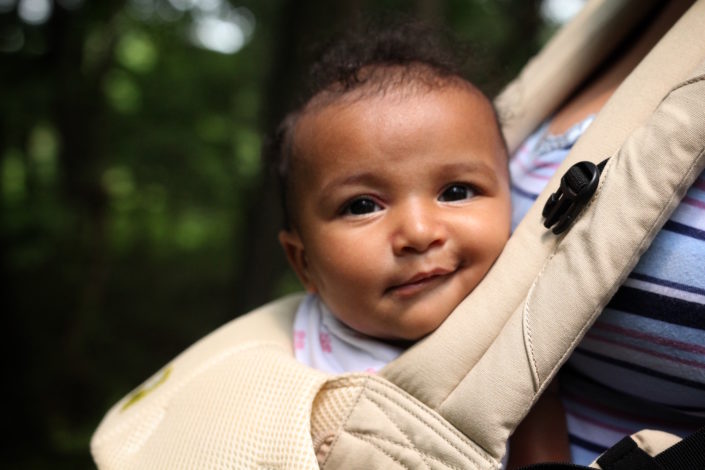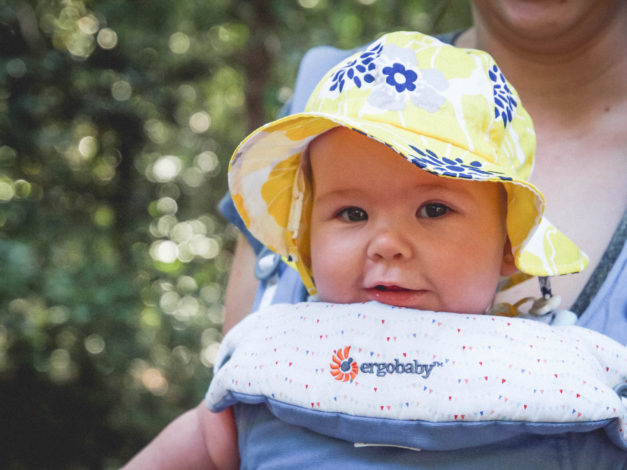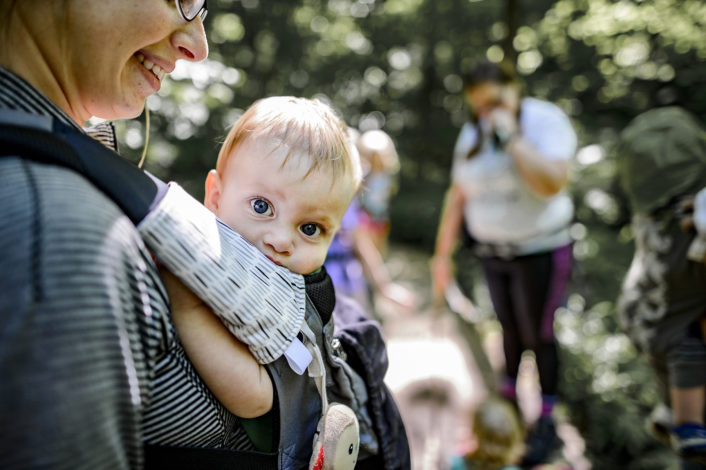Hiking with Young Infants: Tips and Tricks
- Blog Hiking with Young Infants: Tips and Tricks
Tallie shares her journey as a new mom. She talks about how hiking with infants is both doable and shares her tips and tricks with you. If you've been apprehensive about taking your baby hiking, this is the post for you.
Getting out of the house felt like life or death to me when cabin fever set in shortly after my baby boy’s arrival. I needed the November rain on my skin, breath of fresh air and no walls around me. I was craving a hike but my body wasn’t ready and needed time to heal after giving labor to our first little one.

Starting out slowly over the next few months, I began to take walks with my little one while giving myself time. Time to heal post-labor, regain strength and become comfortable as a new mom. Our outings started out to the mailbox, and spread to the end of the street and neighborhood loop. I patted myself on the back for taking the baby out for walks in different neighborhoods close to mine or downtown. It was exhilarating stepping outside the house and once again being independent, and not to mention confident in myself! I found much joy in introducing baby to the outside world and sharing sunshine, passersby, even rain! Living near Portland, OR, I was chomping at the bit to get out into the Columbia Gorge- one of my favorite places in the world! But that meant driving 45 minutes or more to a trailhead. Knowing my baby, this wasn’t an option yet for us even at three months old, nor was I comfortable driving that far with our precious cargo. Staying closer to home was more ideal. If he became fussy or had a dreaded diaper blowout, we could easily leave or turn around and head straight to home. We traded the gorge-ous scenery for a waterfront trail, park path, or downtown sidewalk.

At five months old, our little guy (or me?) was ready to venture outside our comfort zone and head out for an actual hike. One with wildflowers, viewpoints and more! Geared with a baby backpack carrier, snacks, a little water, and sunscreen, we were ready. Our group’s destination: Hood River. I thought we could try a great loop trail for us to try outside of town. The was trailhead located along a dirt logging road. Note: emphasis on the try. I tried to find the trailhead, but failed to do so. We didn’t drive two hours to not hike, so we made lemons out of lemonade. While looking for the trailhead, we met some mountain bikers exiting another trail who recommended the trail they just biked. Why not give this a try? With spontaneity, we set out on this unknown trail. It felt GREAT to be out in the sunshine, taking in the views of Mt. Hood and the Columbia River, and sharing nature. Our outing didn’t last long, just a couple hours, but it was perfect.  Our hikes this past summer with our infant has taught us to plan for the unexpected, yet be flexible.
Our hikes this past summer with our infant has taught us to plan for the unexpected, yet be flexible.
Quick and Helpful Tips for Hiking with Infants
- Keep your diaper bag well stocked and include hand sanitizer, sunscreen, hat for baby, and extra baby clothes.
- Get used to changing your infant’s diaper in your vehicle. When they gotta go, they gotta go!
- It’s ok to turnaround and head home. Fussiness happens.
- Bring plenty of water and snacks! Especially if you’re nursing.
- Use a comfortable baby carrier, for both baby and you. For us, we use the stroller around town, Ergo baby carrier for short walks, and our Deuter baby carrier for hikes.
- In order to accommodate the baby carrier, check out these great zip in options from Zipusin. These allow you to use the jacket you already have but expanded for pregnancy or babywearing.
- Read reviews for difficulty and conditions for hikes. This is handy, I like to stick to easy and moderate with our babe.
What are some of your tips for getting out with your young infants? Share with us in the comments below.
Tallie lives in Southwest Washington and is currently navigating the ups and downs of raising a soon-to-be toddler. She loves spending time outside with her growing family and exploring new places. Outside of enjoying nature, her passions include reading, travel, photography, and DIY projects and crafts.
Photos courtesy of Ali Chandra, Kristin Hinnant, and Laura Castro
This post is sponsored by Zipusin. Hike it Baby was compensated for inclusion in this post. All opinions are our own.
ABOUT OUTGROWN
OutGrown is a 501(c)(3) nonprofit that works to create a world where everyone can enjoy the physical and mental benefits of spending time outside. We are focused on creating opportunities and removing barriers to access so families with babies and young children can take their first steps outside. We believe all families have the right to connect with nature, benefit from spending time outdoors and be inspired to a lifelong love of nature. Since its grassroots inception in 2013, OutGrown is a growing community of 280,000 families and over 300 volunteer Branch Ambassadors. More information on all of our programs can be found at WeAreOutGrown.org
EDITORS NOTE:
We hope you enjoyed reading this article from OutGrown. We’re working hard to provide our community with content and resources that inform, inspire, and entertain you.
But content is not free. It’s built on the hard work and dedication of writers, editors, and volunteers. We make an investment in developing premium content to make it easier for families with young children to connect with nature and each other. We do not ask this lightly, but if you can, please make a contribution and help us extend our reach.
Related Content




Comments